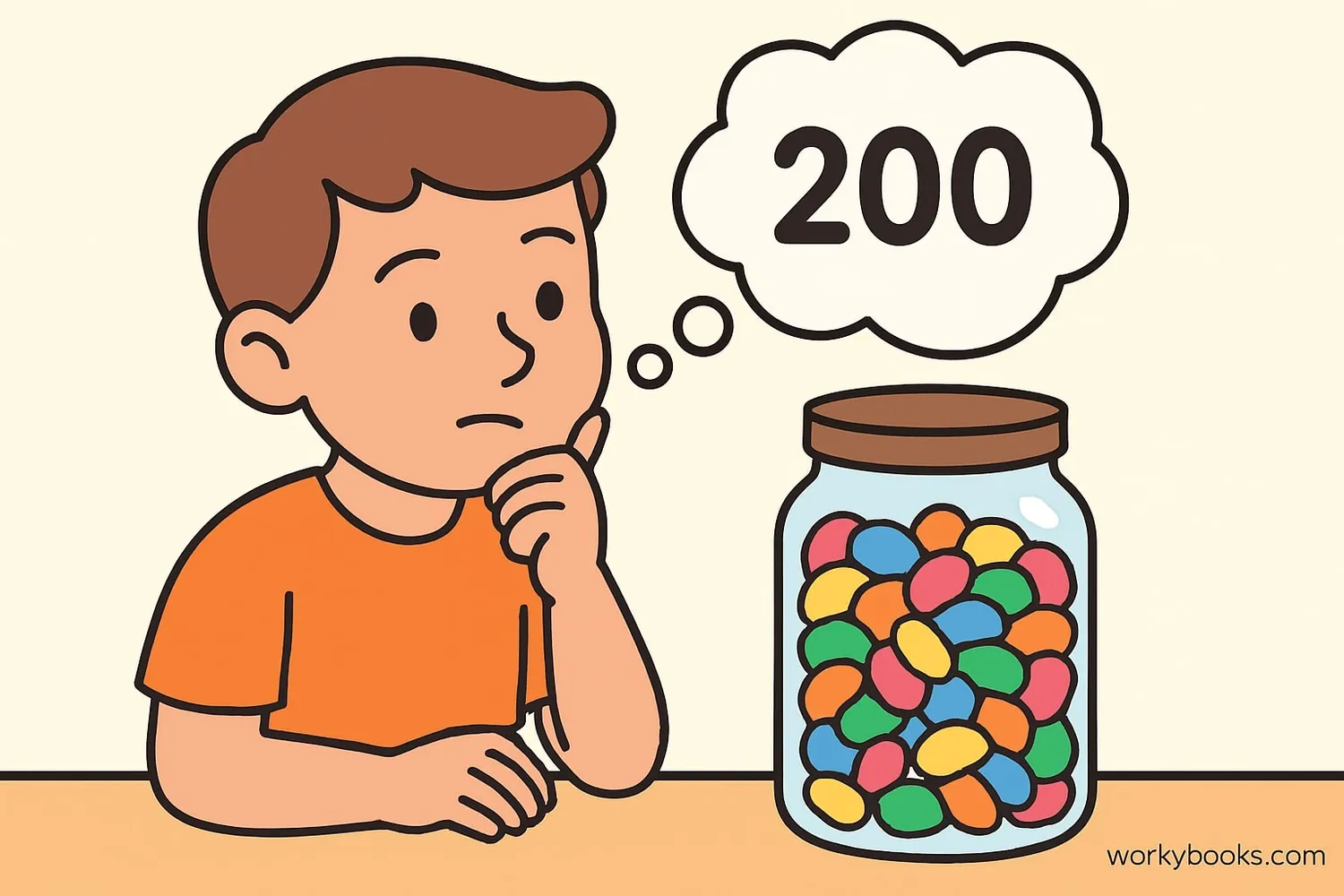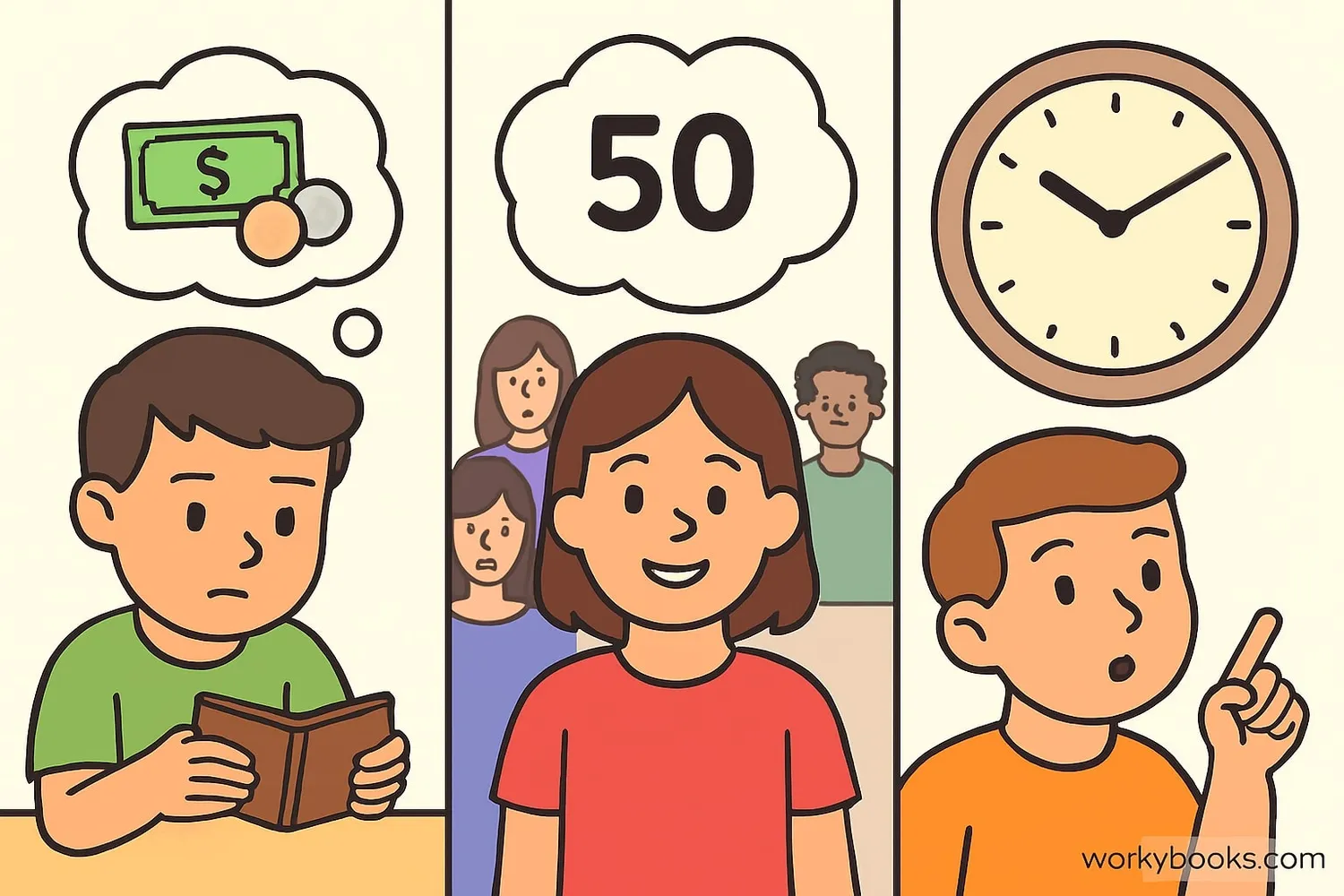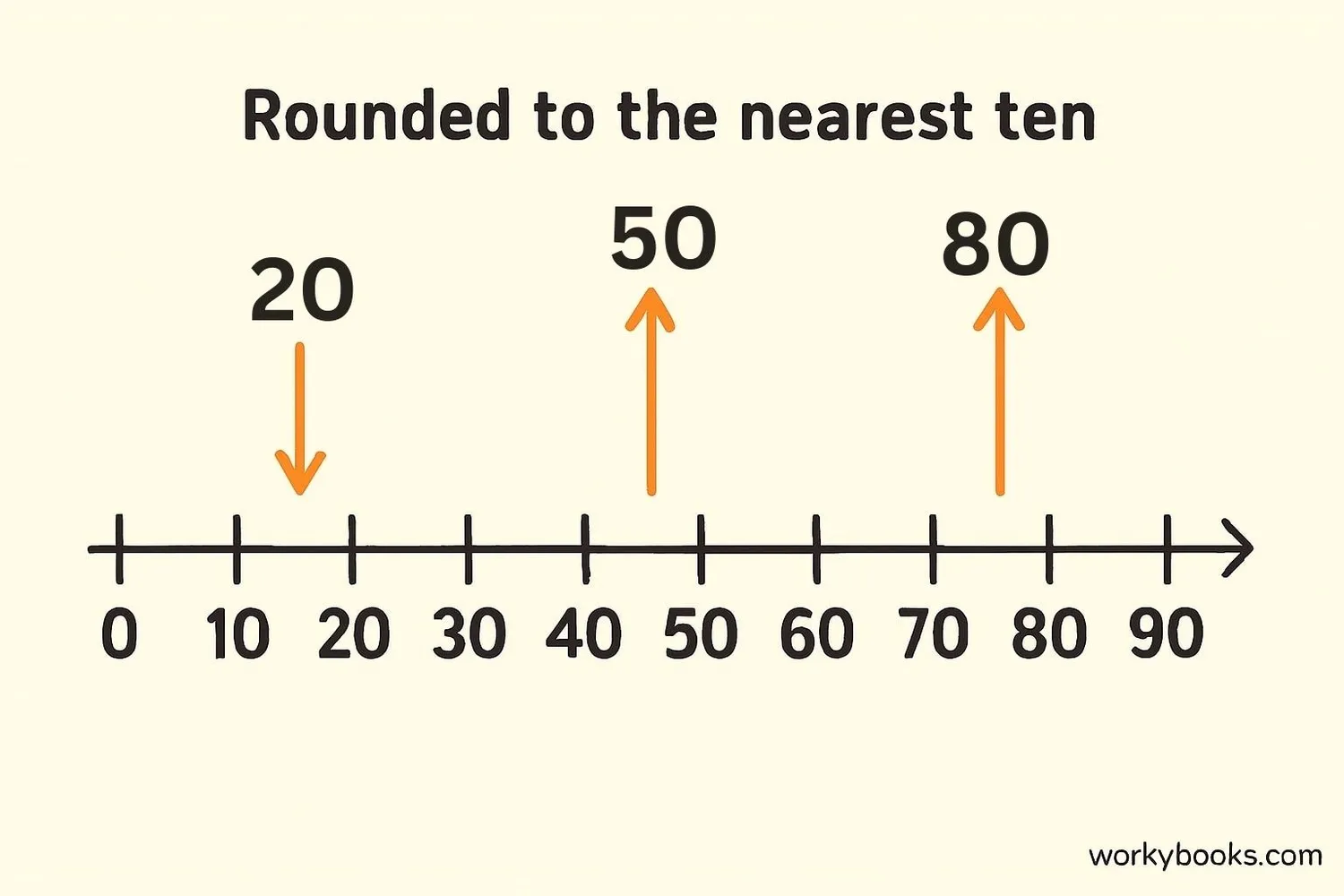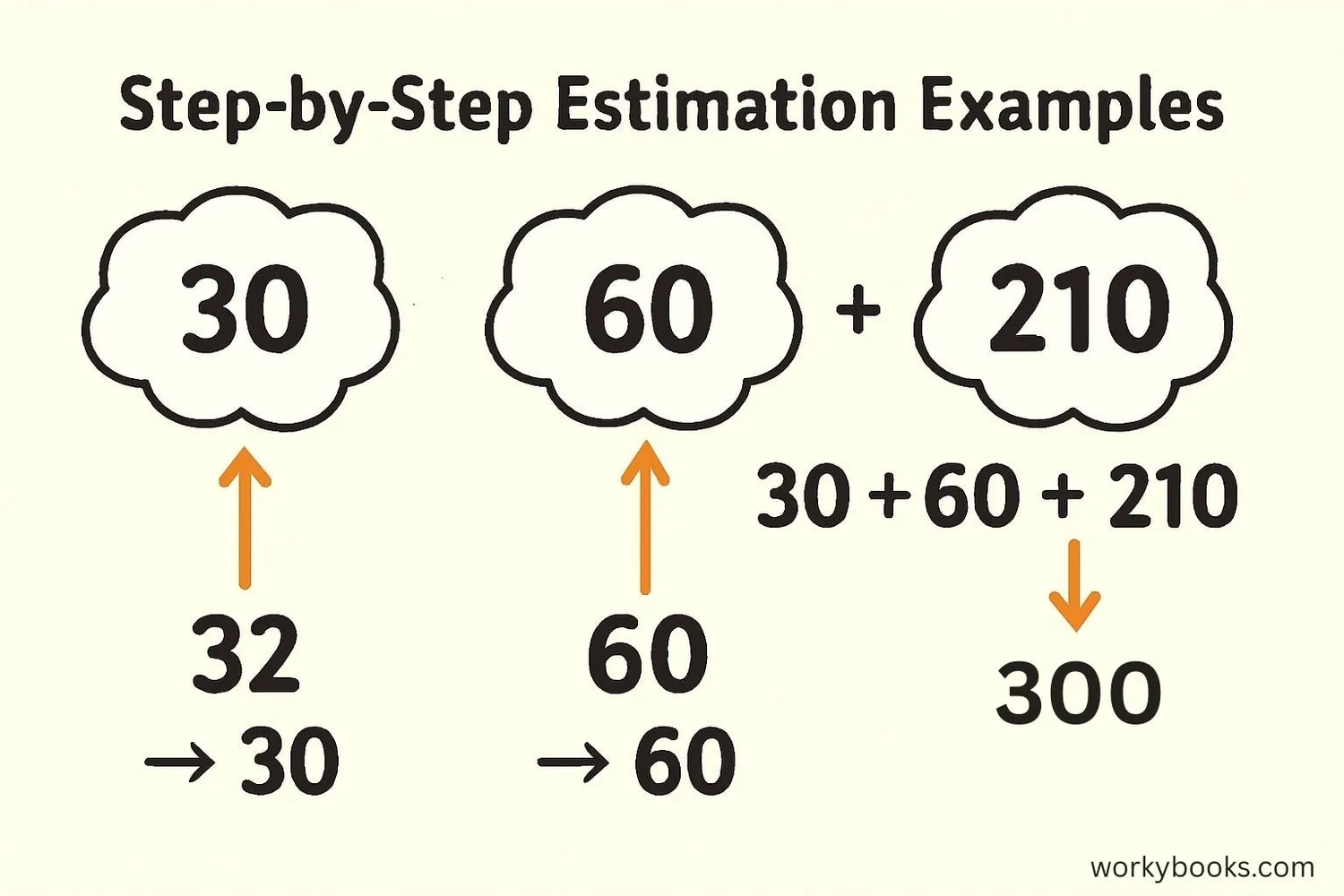Estimate - Definition, Examples, Quiz, FAQ, Trivia
Learn to make smart guesses and round numbers with fun examples and activities
What is Estimation?

Estimation is making a thoughtful guess about a quantity without counting or measuring exactly. It's like being a math detective who uses clues to figure out about how many or about how much.
When we estimate, we're finding a number that is close enough to the right answer. Estimation is different from guessing randomly because we use math strategies to make our estimates reasonable.
We use estimation every day without even realizing it! When you look at a bag of cookies and think "there are about 10 cookies," you're estimating. When you guess how long it will take to finish your homework, you're estimating time.
Key Concept
Estimation is a smart guess that's close to the exact amount, but quicker to find.
Why Do We Estimate?

We estimate because it's often faster and easier than finding an exact answer, and sometimes we don't need to be exactly right. Here are some reasons why estimation is important:
1. Speed: Estimation is much quicker than exact calculation. If you need to know about how much something costs, estimation gives you a quick answer.
2. Checking answers: Estimation helps you check if your exact answer makes sense. If you calculate that a pencil costs $150, but you estimated about $1, you know something's wrong!
3. Real-life situations: Sometimes we can't find an exact number. If you're trying to count how many birds are in a flock flying overhead, you'd need to estimate.
4. Planning: Estimation helps us make plans. If you estimate that your homework will take 30 minutes, you can plan the rest of your evening.
Remember
Estimation isn't about being exactly right—it's about being close enough for the situation.
Rounding Numbers

Rounding is a math strategy we use to make numbers simpler and easier to work with. When we round numbers, we find the closest "friendly" number that ends in zero.
The most common ways to round are to the nearest ten and to the nearest hundred. Here's how it works:
Rounding to Nearest Ten
47 → 50
32 → 30
15 → 20
Rounding to Nearest Hundred
147 → 100
352 → 400
650 → 700
How to round to the nearest ten:
1. Look at the number in the ones place
2. If it's 5 or greater, round up
3. If it's 4 or less, round down
4. Change the ones digit to 0
Example: Round 37 to the nearest ten
The ones digit is 7, which is 5 or greater, so we round up to 40.
Rounding Rule
5 or more? Raise the score! 4 or less? Let it rest!
Estimation Examples

Let's practice estimation with some examples:
Example 1: Sarah has 47 stickers. Michael has 32 stickers. About how many stickers do they have together?
Solution: Round each number to the nearest ten → 50 + 30 = 80 stickers
Example 2: A book has 287 pages. You've read 114 pages. About how many pages are left?
Solution: Round to the nearest hundred → 300 - 100 = 200 pages left
Example 3: Pencils cost 29 cents each. About how much would 4 pencils cost?
Solution: Round 29 to 30 → 30 × 4 = 120 cents or $1.20
Example 4: There are 38 students in Class A and 42 students in Class B. About how many students are there altogether?
Solution: Round each number → 40 + 40 = 80 students
Notice how estimation makes these problems much easier to solve mentally!
Practice Tip
When estimating with money, round to the nearest dollar to make calculations easier.
Estimation Practice Quiz
Test your estimation skills with this 5-question quiz. Choose the best estimate for each question.
Frequently Asked Questions
Here are answers to common questions about estimation:
Math Trivia
Discover interesting facts about estimation and numbers:
Ancient Estimation
Ancient Egyptians used estimation to build the pyramids. They estimated the number of stones needed and the angles for the sides, and their estimates were remarkably accurate!
Animal Estimators
Some animals can estimate quantities! Studies show that monkeys, dolphins, and even bees can estimate amounts and compare numbers of objects.
Space Estimation
Astronomers use estimation to calculate distances between stars and galaxies. Since these distances are huge, exact numbers aren't possible, so estimation is essential.
Estimation Record
The world record for estimating the number of jellybeans in a jar is held by a math teacher who guessed 3,432 beans when the actual count was 3,437—only 5 away!


